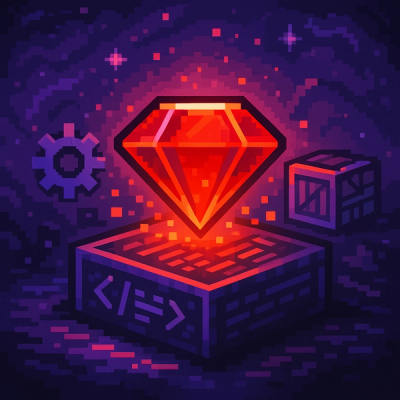
Security News
The Changelog Podcast: Practical Steps to Stay Safe on npm
Learn the essential steps every developer should take to stay secure on npm and reduce exposure to supply chain attacks.
jest-coverage-thresholds-bumper
Advanced tools
Tool for Jest testing library that automatically bumps up code coverage thresholds as real code coverage improves.
Tool for Jest testing library that automatically bumps up code coverage thresholds as real code coverage improves. Inspired by https://github.com/Koleok/jest-coverage-ratchet, but I decided to re-implement without Ramda (it looks cool, but readability sucks IMO). I am also adding features I need. My team are using this tool for many months now, and it seems to be stable.
Tool supports jest.config.json, jest.config.js, and jest.config.ts configuration files, as well as jest section in package.json.
Sometimes you may forget to cover some of your new code with tests. Jest helps to detect that - it it compares code coverage against configured thresholds and fails if there are not enough tests (see https://jestjs.io/docs/configuration#coveragethreshold-object). Unfortunately, it only works if your thresholds are always up to date - e.g. if your specified threshold is 90% and your coverage drops from 92% to 91% then Jest will fail to see that.
jest-coverage-thresholds-bumper helps to regularly update configured thresholds, so if your real coverage drops then Jest will report it immediately.
Note that sometimes it could be perfectly normal to decrease configured thresholds (e.g. if you removed a chunk of 100% covered code). In this case, you will have to update threshold values in Jest config and include it into your pull request. This way reviewers will have better visibility on the code coverage impact and why it happens.
Assuming that you already have Jest installed, call:
npm install -D jest-coverage-thresholds-bumper
json-summary reporter. It is needed to produce coverage results for analysis.0). jest-coverage-thresholds-bumper only updates existing values. Example:// jest.config.js
...
coverageThreshold: {
global: {
lines: 80,
statements: 80,
branches: 80,
functions: 80,
}
}
...
jest-coverage-thresholds-bumper after running tests, for example:// package.json
...
"scripts": {
"test": "jest",
"posttest": "jest-coverage-thresholds-bumper",
}
...
When the tool is called, it finds coverage information, compares results with stored threshold values, and bumps up threshold values if results are higher. Note that only defined thresholds are bumped up - i.e. if no thresholds exist, nothing will be bumped.
Usage: jest-coverage-thresholds-bumper <command> [options]
Options:
--coverage-summary-path Path to Jest coverage results [string] [default: ./coverage/coverage-summary.json]
--config-path Path to Jest config file [string] [default: Search for jest.config.* files or "jest" section in package.json]
--margin Minimal threshold increase in per cent [number] [default: 0]
--dry-run Do analysis, but don't change any thresholds [boolean] [default: false]
--silent No console output unless something goes wrong [boolean] [default: false]
--help Show help [boolean]
--version Show version number [boolean]
Q: How margin parameter works? What is it for?
A: Imagine that both real and expected coverage are at 90 percent and the margin is 1 percent. If you add a tiny test that increases real coverage by only 0.5 percent then this tool won't bump up the expected coverage. If you add more tests and real coverage improves to 91 or mor percent then your threshold will increase. Some people may use margin parameter to ignore little fluctuations in code coverage during active development phase, which could fail builds.
Q: Which NodeJS versions do you support?
A: I am aiming for all currently supported LTS versions. Package might work with older versions, but I am not testing it and won't be fixing issues that happen only with those old versions. Current minimal version is NodeJS v12.
[1.1.0] - 2021-12-24
--config-path CLI option.FAQs
Tool for Jest testing library that automatically bumps up code coverage thresholds as real code coverage improves.
We found that jest-coverage-thresholds-bumper demonstrated a not healthy version release cadence and project activity because the last version was released a year ago. It has 1 open source maintainer collaborating on the project.
Did you know?

Socket for GitHub automatically highlights issues in each pull request and monitors the health of all your open source dependencies. Discover the contents of your packages and block harmful activity before you install or update your dependencies.

Security News
Learn the essential steps every developer should take to stay secure on npm and reduce exposure to supply chain attacks.

Security News
Experts push back on new claims about AI-driven ransomware, warning that hype and sponsored research are distorting how the threat is understood.

Security News
Ruby's creator Matz assumes control of RubyGems and Bundler repositories while former maintainers agree to step back and transfer all rights to end the dispute.